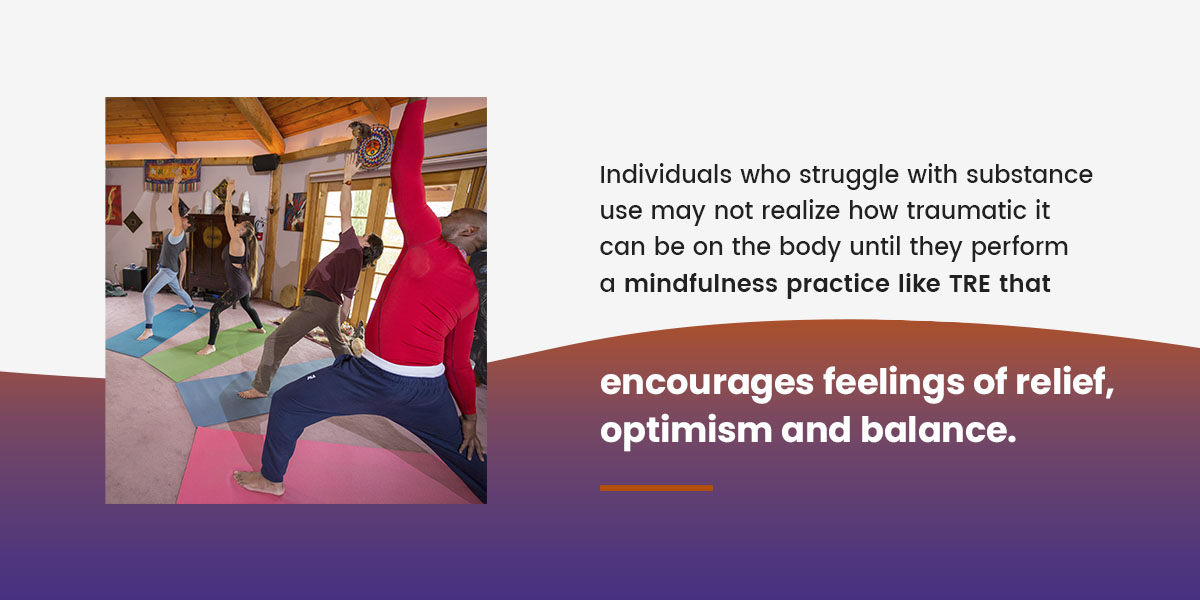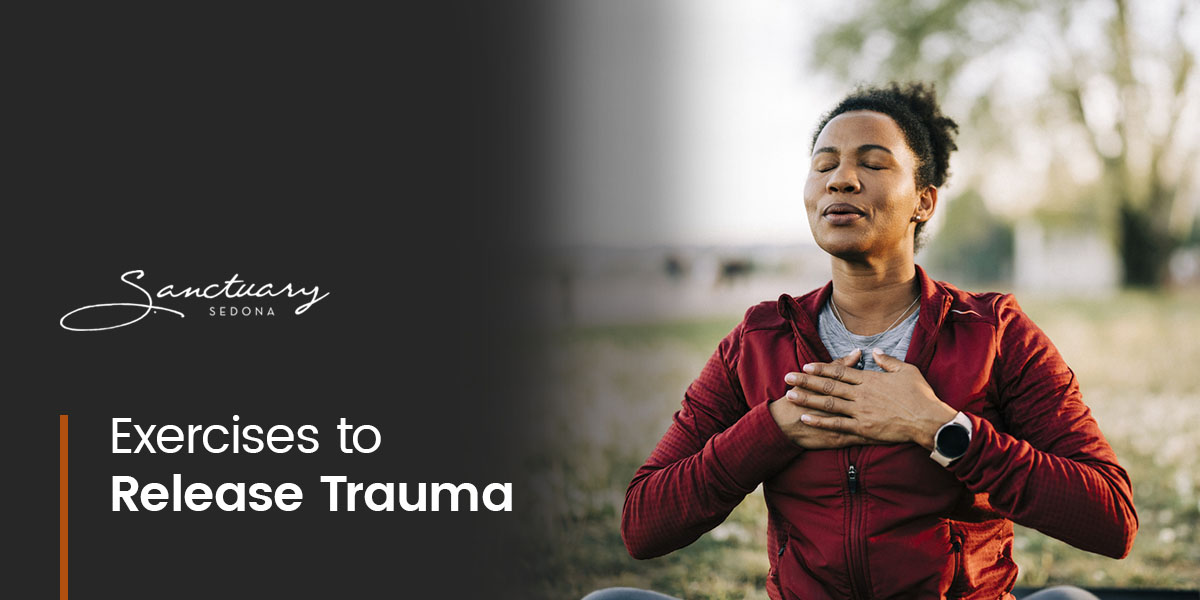Exercises to Release Trauma
Trauma manifests differently for everyone. Though primarily treated as a psychological condition, it has been proven to affect the body physically, behaviorally and cognitively. For example, individuals with post-traumatic stress disorder (PTSD) can have physical reactions to triggers due to the way their brain regulates stress hormones. Some physical manifestations of trauma can include headaches, fatigue, low energy, loss of appetite, impaired sleep and being startled easily.
Studies show that traumatic experiences may even impair muscle function and metabolism in individuals as they age. Though there are many traditional methods on how to release trauma, such as meditation, you may be interested to learn about a relatively new approach called trauma release exercises (TRE). As the name suggests, this therapeutic strategy focuses on soothing the nervous system and simultaneously supporting the body and mind.
What Are Trauma Release Exercises?
Trauma release exercises are a form of somatic therapy, which explores how we can treat the physical body to manage unresolved emotional issues. This body-based technique consists of several exercises that focus on stretching various muscle groups that tend to “hold” deep-seated stress. These exercises can help induce a shaking response, also known as the body’s natural tremor mechanism, which has been shown to help release pent-up trauma and tension.
Consider how you might shake your leg when you’re nervous or tap something nearby when you’re stressed. TRE works similarly by getting to the root of your trauma and anxiety while simultaneously decreasing physical pain and muscular tension. Stretching, shaking or vibrating your muscles can naturally release tension and reduce stress levels.
Like yoga, TRE is a gentle mind-body practice that can help reduce sympathetic nervous system activity to restore the body’s balance.
What Are The Benefits of TREs?
The benefits of trauma release exercises are similar to those of trauma-informed yoga, which include helping relieve physical symptoms of PTSD, chronic stress, pain and anxiety by helping the body relax. Other potential benefits of this trauma release therapy can include:
- Decreased muscle pain
- Decreased headaches and migraines
- Decreased worry
- Increased mobility
- Improved flexibility
- Enhanced emotional well-being
- Enhanced resilience to stress
- Improved sleep
- Improved bodily awareness
- Improved energy
Who Can Use TRE & Trauma Release Stretches?
Almost anyone can benefit from TRE because it focuses on using the body to release negative sensations and emotions. Individuals who suffer from anxiety, complex trauma, stress or PTSD can practice TRE to help improve their overall health and well-being by prioritizing a sense of calm and relaxation.
TRE can also be helpful for those suffering from addiction or in recovery. Individuals who struggle with substance use may not realize how traumatic it can be on the body until they perform a mindfulness practice like TRE that encourages feelings of relief, optimism and balance. These exercises can also help you pinpoint where stress is stored in your body and how it relates to your condition. Trauma release exercises are relatively simple to perform and suitable for individuals of all fitness levels.

Try These Exercises To Release Trauma at Home
Though it’s recommended to try TREs under the instruction of a mental health professional, you don’t need any special equipment or experience for these physical movements. Here are some TREs you can try at home. When performing any of these exercises, remember to start slow and listen to your body. Adjust the trauma stretches as needed.
1. Standing Forward Fold
Start with your feet hip-width apart. Slowly fold forward at your hips and allow your upper body to relax toward the floor. Let your arms hang loosely. Next, gently shake your body from side to side and allow your body to naturally shake where it wants to. Take slow, deep breaths and visualize releasing trauma with every exhale. After two minutes, slowly roll your upper body back up into a standing position.
2. Spiral Visualization
Start by closing your eyes and visualizing your physical body. Think of a stressful or triggering memory and pinpoint your body’s response, such as an increasing heartbeat or urge to grind your teeth. Locate the area of stress in your body and picture a spiral turning in that place. Is the spiral turning fast or slow? Is it turning clockwise or counterclockwise?
Now, change the spiral so it’s moving in the opposite direction. Visualize the spiral as you use your mind to turn it around and slow it down. Focus on taking slow, deep breaths as you go through this exercise. Concentrate on your senses. Examine how your body feels and what you notice in your surrounding environment. Do you feel more balanced? Lighter? Less tense? More aware?
3. Hip and Pelvis Stretch
Stand with your legs shoulder-width apart. Gently fold your body forward and bend your knees slightly until you can touch the floor with your hands. With your hands centered between your spread feet, take a few deep breaths. Relax any tension in your body to help release tension. Next, slowly walk your hands to one foot. Hold this position for three breaths.
Walk your hands over to your other foot and repeat. Move your hands back to the center and slowly reach behind you. Hold this position for three deep breaths. Come back to a standing position and take a moment to note how your body feels.
4. Wall Sitting Stretch
Stretch your upper legs and promote circulation with a wall sit. Start by lying flat on your back with your knees bent and feet flat on the ground. Slowly open your knees until they touch the floor on either side. If you can, touch the soles of your feet together and keep your heels close to your body. Gently lift your hips off the ground for a few seconds to one minute, then bring them down and rest. Repeat this exercise and bring your knees closer together in increments.
With each repetition, your knees should get closer and closer together while lifting your hips off the ground. Stretch your legs out straight on the wall to give yourself a break or to finish the stretch.
5. Open Front Body Stretch
Stand with your feet slightly apart and let your hands rest behind your back. Look up or down while you bend your knees slightly. In one smooth movement, push your hips forward and bow your back to stretch your stomach muscles. Rotate your hips to one side and take a few deep breaths as you feel your torso and shoulders open for a gentle stretch. Repeat by rotating in the opposite direction.
Other Ways to Help Release Trauma From the Body
TRE is an effective self-help technique you can use at home to help you relax if you’re feeling stressed or triggered by traumatic experiences. However, combining TRE with additional support can help you process your trauma and find additional ways to achieve peace. Working with a professional who specializes in trauma, addiction or psychiatry can help resolve the root causes of your trauma and provide emotional guidance.
For example, holistic trauma healing is a type of treatment program that can help you recover from trauma naturally and achieve long-lasting healing. Talk therapy, support groups, mindfulness and movement therapy can also help align your mind, body and spirit.
Learn How The Sanctuary at Sedona Can Help With PTSD and Trauma
You can try TRE at home to help with certain symptoms of trauma that leave you feeling tense and stressed. However, if you’re suffering from PTSD, addiction or anxiety that has compromised your peace of mind and quality of life, The Sanctuary at Sedona can help. We specialize in holistic and alternative treatment methods to address the root cause of your emotional health issues. If you want to apply TRE and other mindfulness practices to your recovery journey, contact us today!
Heal the Body, Repair the Brain, Recover the Soul.


